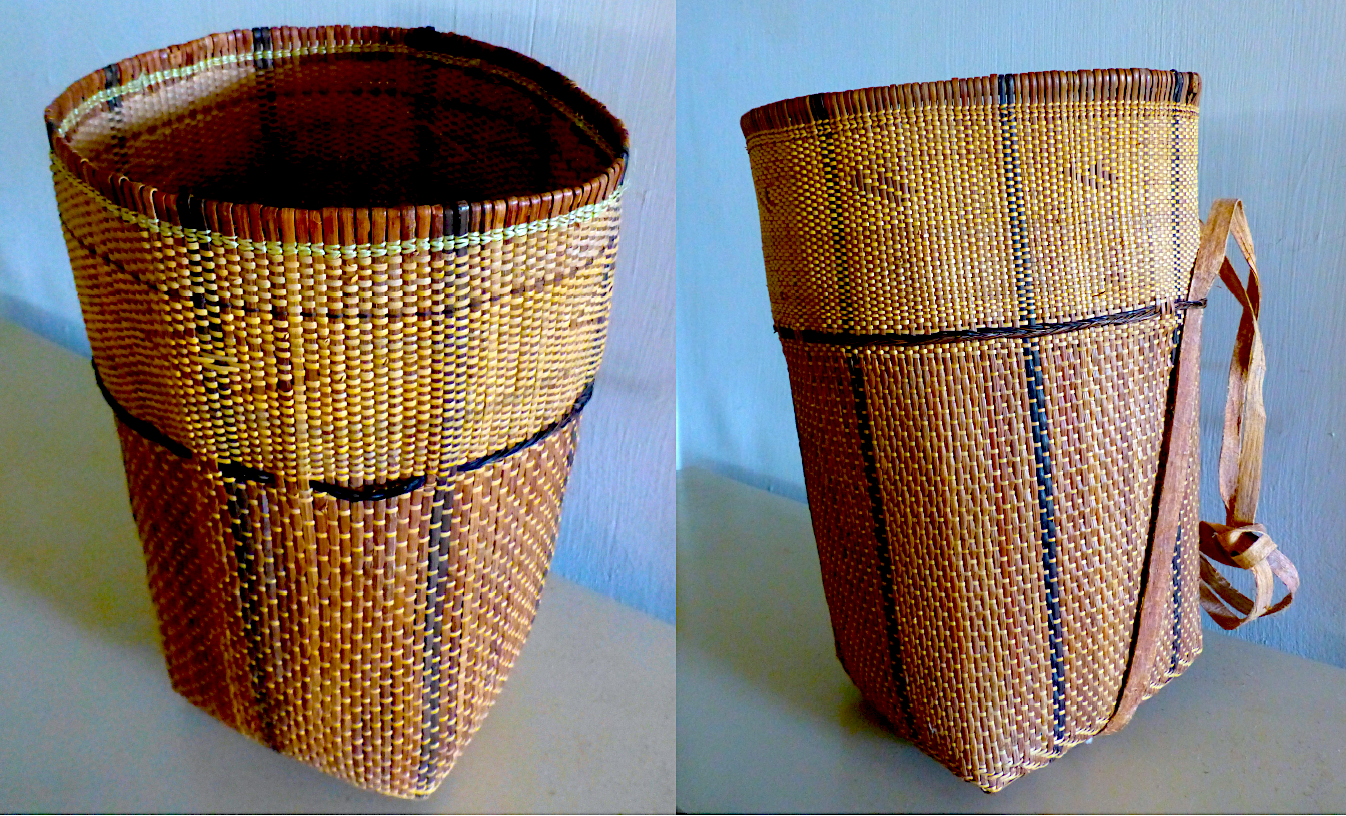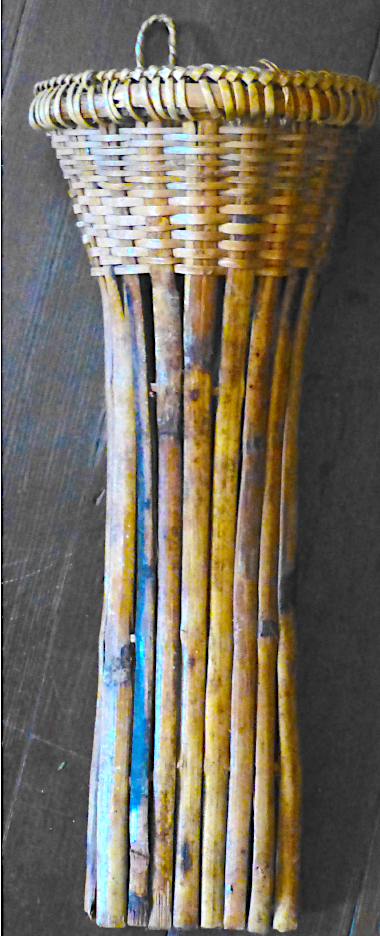Iban Baskets
Bamboo, rattan; 30.5 x 18cm. | Bamboo, rattan, bark strips; 30 x 20cm.
The woven baskets of the Iban, Kayan, Kenyah and Penan are among the most highly regarded in Borneo. The most common weaving material is rattan, but bamboo, swamp nipah grass and pandanus palms are also used for baskets. In Brunei, and increasingly in Sarawak and Kalimantan, while each ethnic group has certain distinctive patterns, hundreds or even thousands of years of trade and interaction have led to intermixing. The ethnic mixing is evident in the evolution of weaving techniques and patterns.
The techniques employed in the production of these objects are often derived from factors such as individual and community perceptions of the environment, conceptions of the self and modes of economic interaction, social hierarchy, and division of labor. Basketry is also indicative of significant ecological conditions, as it includes specific strategies for the sustainable management of plant resources. Studies of fiber use and distribution demonstrate the trade routes of human groups, as well as the diffusion and transmission of new technologies and techniques.
Like weaving, Iban basket making and all the tasks associated with it are generally considered women's work. Also like weaving, there are diverse ritual and practical uses associated with it. There is a great variation in baskets’ sizes and shapes, but a general distinction can be drawn between rigid and soft baskets. Rigid baskets are often strengthened at the four corners and have a base supported by crossed rods. The corners tend to be reinforced by wooden supports forming four seams that lend stability. Baskets intended to transport agricultural crops tend to be rigid, while those for carrying heavy loads are more flexible and expandable.

Balud (rigid split bamboo a symbol of adulthood). Bamboo, cane; 29 x 10.5cm. | Paddy Field motif. Rattan/bemban; 37 x 21.5cm. | Spider motif. Rattan/bemban; 32.5 x 16cm.
Though there are many established basketry motifs, they may also be received in dreams and through other forms of contact with the spirit world. It is believed that specific motifs may activate powerful forces causing sickness and death; special norms must be followed before introducing novices to the weaving of dangerous patterns. Among some Dayak groups of Sarawak, beautifully decorated woven bags and small baskets are carried by a bride visiting her in-laws to demonstrate her skills in customary craft making – demonstrating the importance of the first woven basket as a symbol of adulthood.
Nelson South East Asia Collection © 2025


